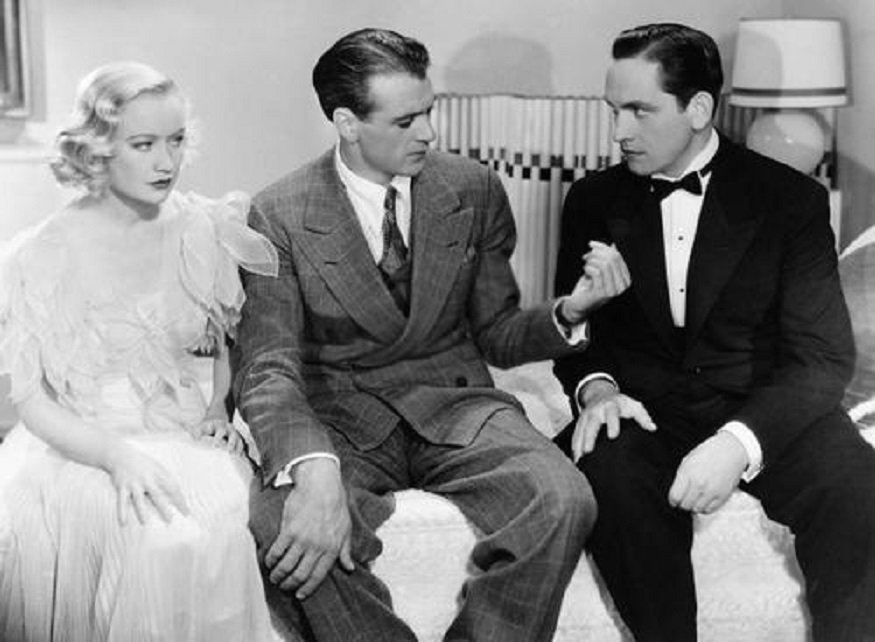Menswear writer Eric Twardzik published a piece yesterday about opera pumps becoming “a modern black-tie essential,”* and it made Etiquetteer ask “Weren’t they always?”
Twentieth-century etiquette writers do not wax rhapsodic over a gentleman’s evening shoes. Their collective attitude seems to be the police detective’s: “Just the facts, ma’am.” Esquire Etiquette of 1953 just states “Black patent leather only. Pumps, with or without flat grosgrain bows, or oxfords without toe caps.”** Emily Post Herself in 1937 said only “. . . wear patent-leather pumps, or ties, and plain black silk socks.”*** Amy Vanderbilt gives us more to work with in 1963: “. . . pumps are worn with tails, at home with a smoking jacket, or with a dinner jacket.” But she also notes the innovation (intrusion?) of black suede. “Internationally minded well-dressed men have been wearing black suede shoes with dinner jackets. Much easier on the feet, they say, for long standing and for dancing.”**** Which leads Etiquetteer to ask “Can they really be called opera pumps if they aren’t patent leather?”
Apparently yes, but Etiquetteer is not really convinced. Twardzik reports on at least one traditional cobbler turning out opera pumps in black suede, which doesn’t push the envelope so much. But the availability of daring color combinations like royal blue and ivory or red and black giraffe print, or the statement that “There is very little that looks equally at home with black tie and an old beaten-up pair of 501s” — oh dear me no, that is intruding into the role of the furlane, the famous Venetian gondolier slippers. Call Etiquetteer No Fun if you wish, but if they aren’t designed exclusively for evening clothes, they need to be called something else.
And really, just how experimental can one get with evening clothes and still appear as a gentleman? Traditional (some might say rigid) style for a man’s evening clothes required an absence of color for Perfect Propriety: black and white only including one’s boutonniere*****. But Fashion will sometimes intrude a spot of color. Emily Post noted “London’s rage for red carnations has not gone out of fashion, and lots of the smartest men have been wearing them; but others equally smart have refused to accept them.” And Etiquetteer was astonished to learn from The Gentry Man****** that in the 1950s Capezio had introduced an opera pump with interchangeable bows of red or white, “smart, subtle and welcome color to formal wear . . . ”
In the last 50 years the rise of Creative Black Tie has led to a near permanent blurring of the traditional rules — which even Etiquetteer has embraced on festive occasions. Last year Etiquetteer invested (it is not too strong a word) in a pair of Baudoin and Lange opera pumps, and they are truly elegant and comfortable, and much easier to contend with than oxfords. And for a themed formal evening, why not dress them up with an old pair of earrings that coordinate with socks and waistcoat?
The best advice remains what Auntie Mame told Agnes Gooch that fateful New Year’s Eve: “Put down that lime green at once, Agnes. You’re supposed to dominate it!” From shoes to chapeau, what you wear should call flattering attention to you. What could be more Perfectly Proper than that?
Etiquetteer wishes you well-dressed and beautiful wintertime functions.
*It’s a most interesting piece, especially for those who love formal dress.
**Esquire Etiquette: A guide to business, sports and social conduct by the editors of esquire magazine, 1953.
***Etiquette: The Blue Book of Social Usage, by Emily Post (Mrs. Price Post), 1937.
****Amy Vanderbilt’s New Complete Book of Etiquette, 1963.
*****Etiquetteer has written about a gentleman’s jewelry here.
******The Gentry Man: A Guide for the Civilized Male: The Best of Gentry Magazine 1951-1957.






















